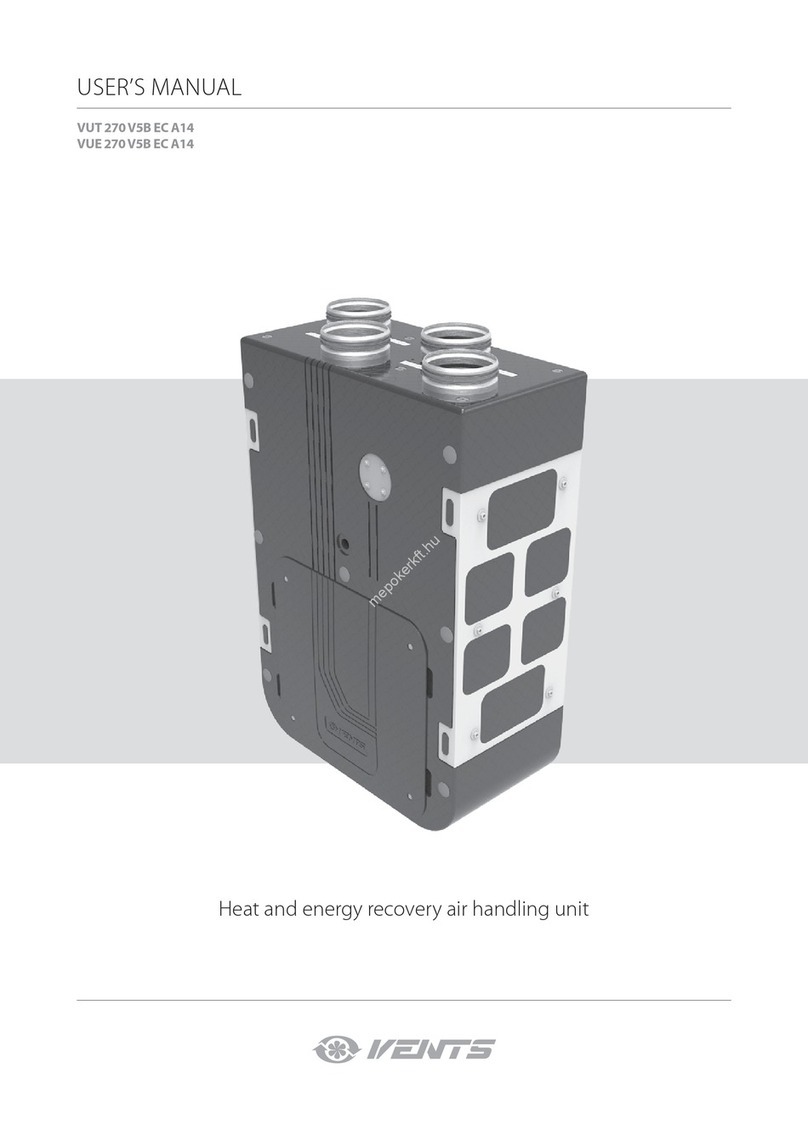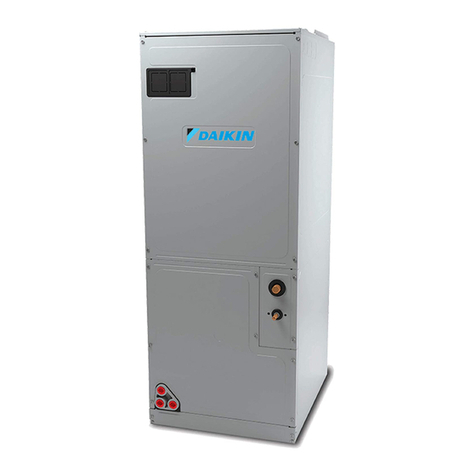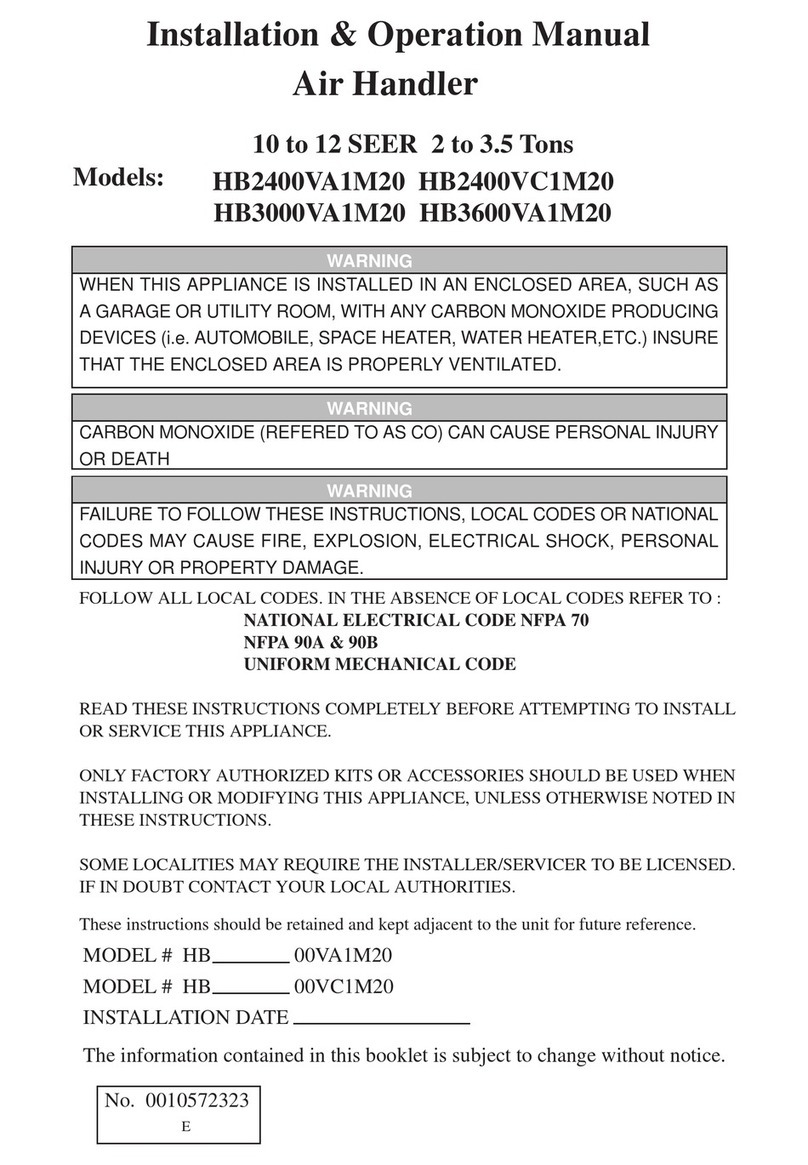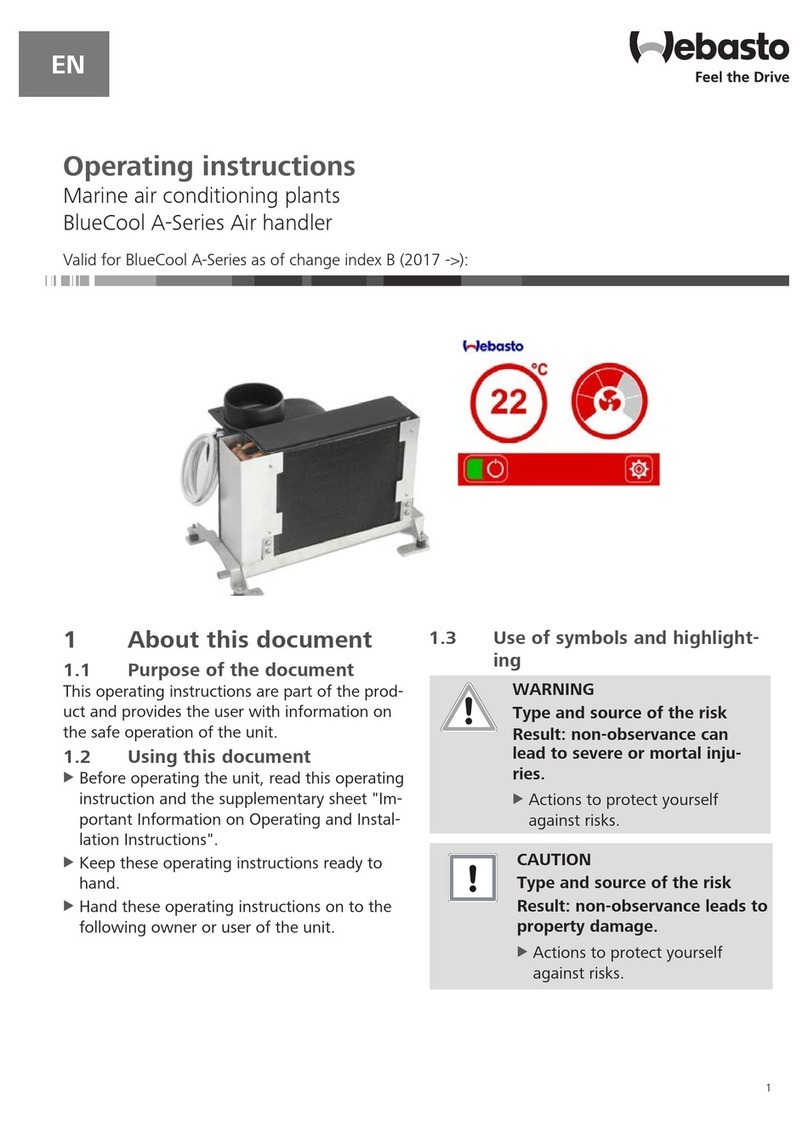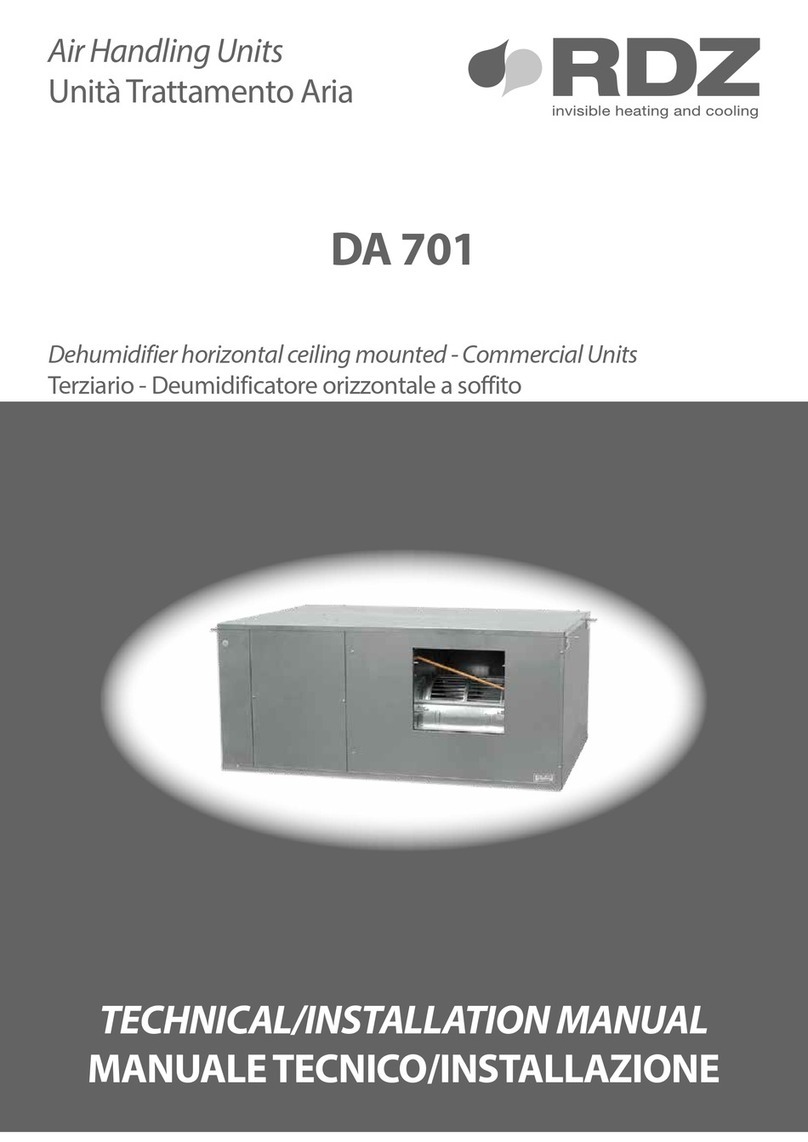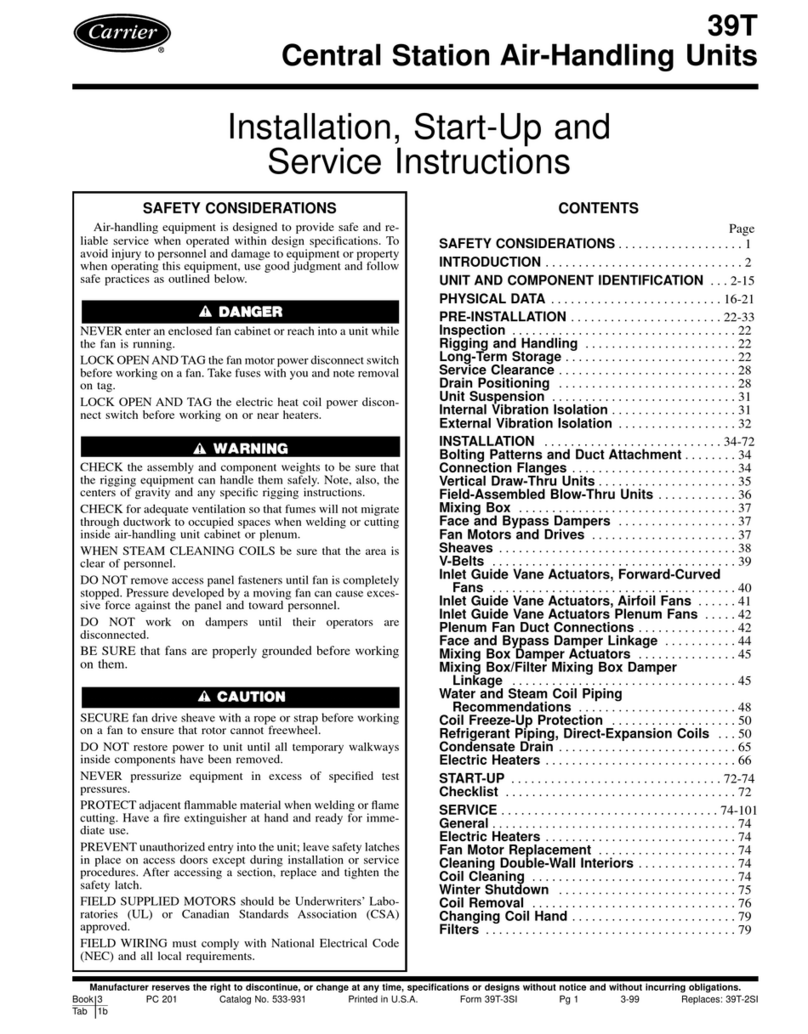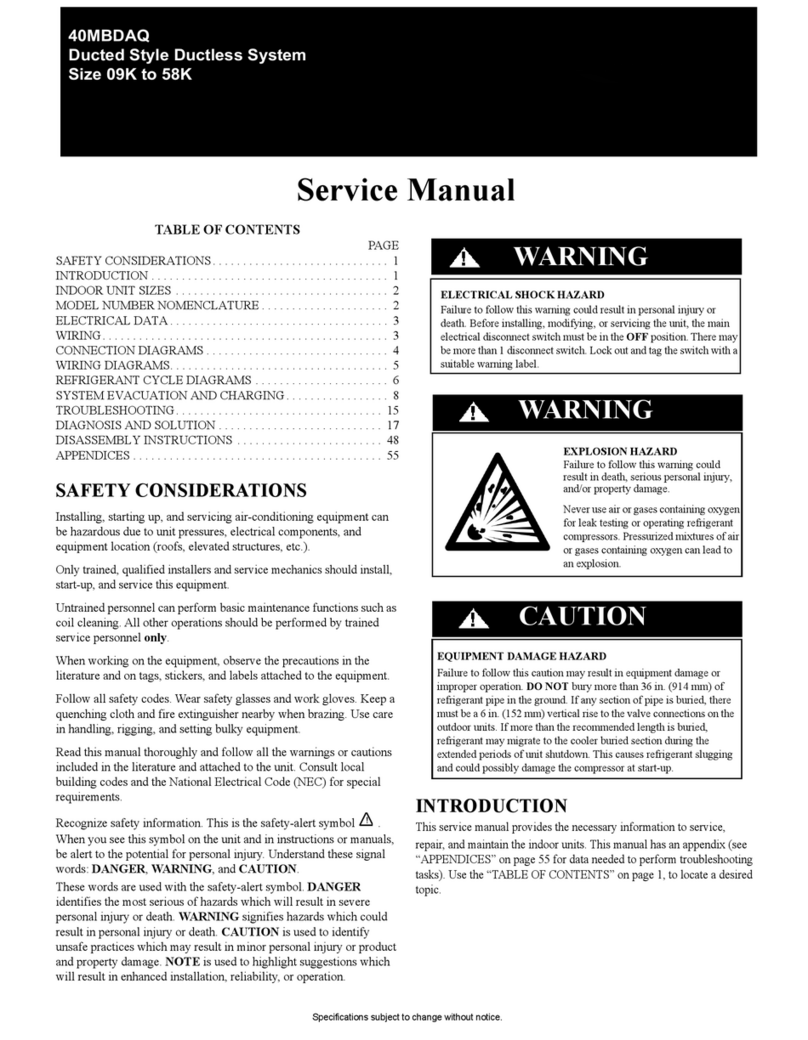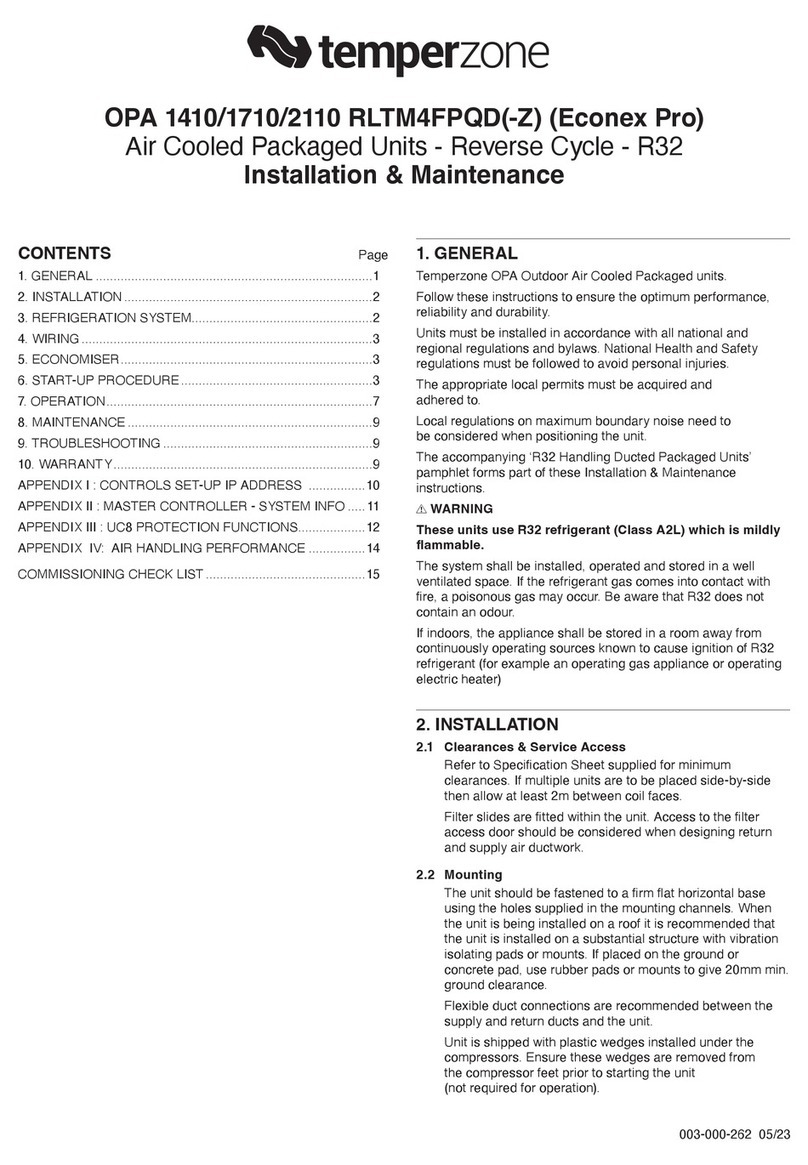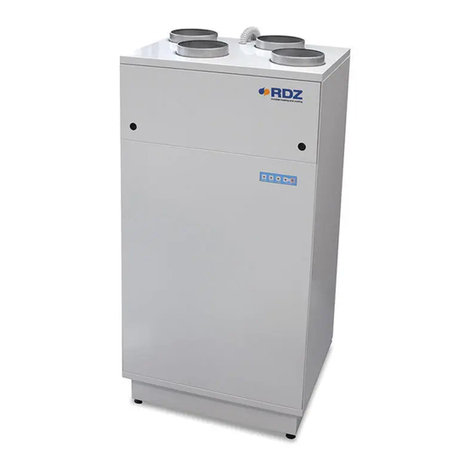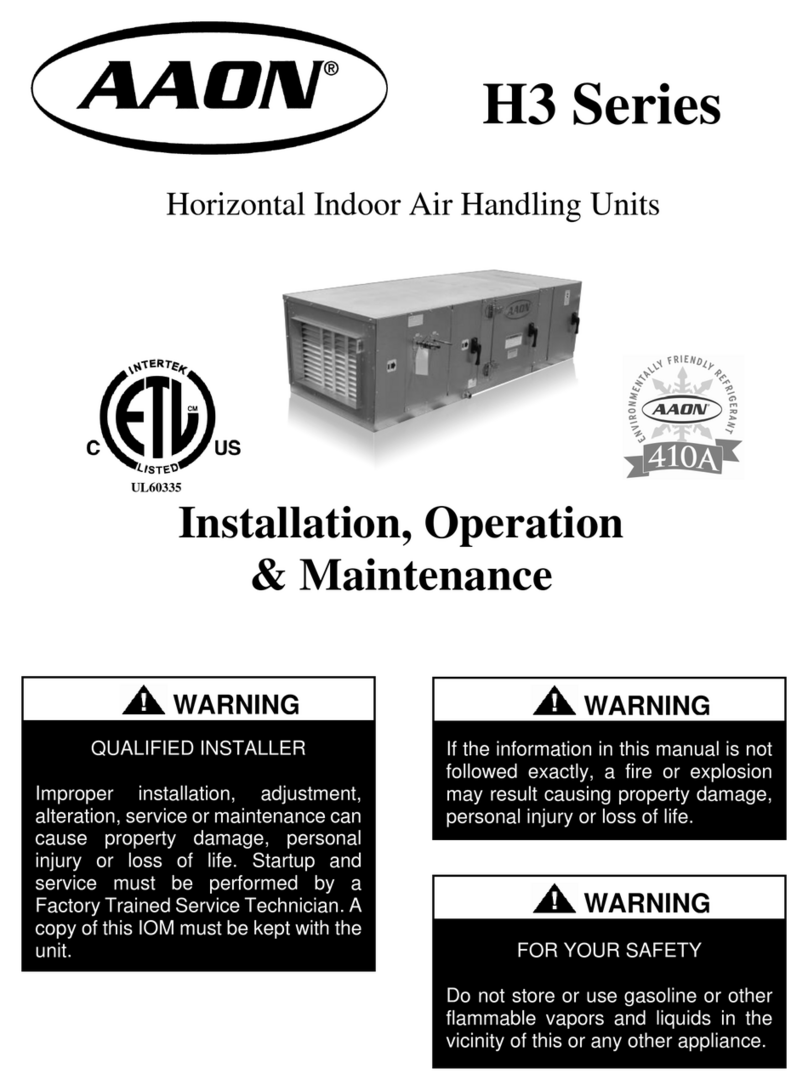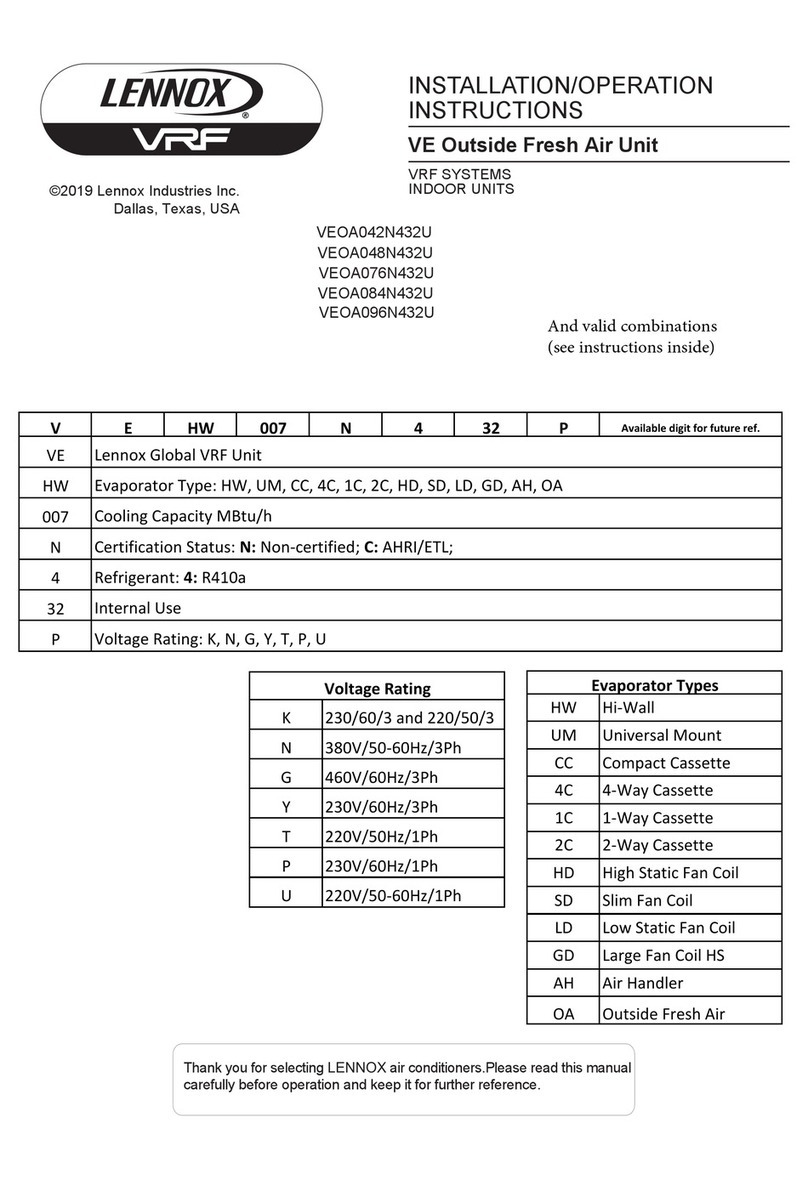General These installation and maintenance instructions apply only to WOLF AHU TE/AHUW
TE series air-handling units.
Each person tasked with installing, commissioning or maintaining the equipment must
read through these instructions before commencing work.
Compliance with these instructions is mandatory.
Onlysuitablytrainedandqualiedpersonnelarepermittedtoundertakeinstallation,
commissioning and maintenance work.
The assembly and maintenance instructions are an element of the appliance supplied
and must be kept in an accessible place.
Non-compliance with the installation and maintenance instructions voids all WOLF
warranties.
Symbols Thefollowingsymbolsandwarningsareusedintheseinstallationandmaintenance
instructions.Theseimportantinstructionsapplytotheprotectionofpersonnel
andtotechnicaloperationalsafety.
"Safetyinstruction"identiesinstructionsthatmustbepreciselycompliedwithin
ordertoavoidendangeringorinjuringpersonsandtopreventtheriskofdamage
totheequipment.
Electricshockhazardduetoelectricallylivecomponents.
Note:SwitchOFFtheON/OFFswitchbeforeremovingthecasing.
Neverattempttotouchelectricalcomponentsorcontactswhilethemasterswitch
isON.Electricshockhazardwithriskstohealthorfatalinjury.
TerminalsremainliveevenaftertheON/OFFswitchhasbeenswitchedOFF.
"Note"identies technicalinstructionsthat mustbe compliedwithto prevent
equipmentdamageandmalfunctions.
Inadditiontotheinstallationandmaintenanceinstructions,labelsafxedtothe
equipmentbearinformation.
Compliancewiththese,too,ismandatory.
Note
- The persons tasked with installation, commissioning, maintenance and operation of
theair-handlingunitmustbeadequatelyqualiedandmusthavereceivedsuitable
instruction.
- Onlytrainedandqualiedelectriciansarepermittedtoundertakeworkontheelectrical
system.
- All electrical work must be in compliance with VDE requirements [or local regulations]
and the regulations of the local power supply utility.
- The air-handling unit must always be operated within the range of operating parameters
stipulated in the technical documentation supplied by WOLF.
-
Correct use of the air-handling unit means exclusively the use for ventilation purposes.
Air is the only medium that can be handled by the equipment.
- Never remove, jumper, bypass or by any other means render inoperative safety
devices and monitoring devices.
- Never operate the air-handling unit unless it is in full working order. Malfunctions
and damage that impair or could impair safety must be repaired immediately and
professionally.
- Intheeventofaretheair-handlingunitmustshutdownautomaticallybysuitable
meanssuchasareprotectiondamper(installedonsite),asotherwisehazardous
substances can be transported into the rooms downstream of the air-handling unit.
- Check the electrical equipment of the appliance regularly. Tighten loose connections
and replace faulty cables immediately.
Safetyinstructions
Symbols/Safetyinstructions
